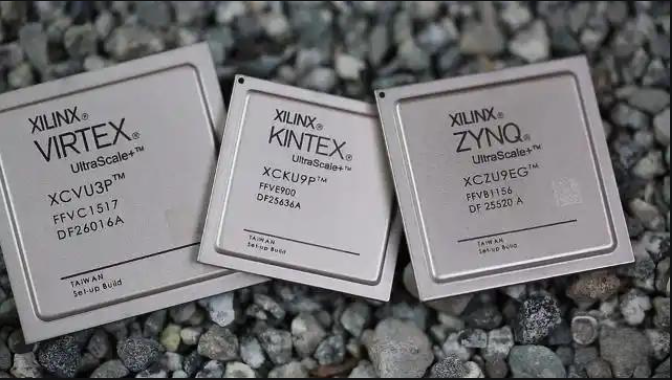Time: 2025-04-01 11:06:47View:
Choosing the right Field-Programmable Gate Array (FPGA) depends on your project requirements, budget, and technical constraints. Below is a structured approach to selecting the best FPGA for your application.

Low-End FPGAs (1K–50K LUTs) – Simple control logic, basic I/O expansion
Mid-Range FPGAs (50K–500K LUTs) – DSP, motor control, embedded processing
Example: Xilinx Artix-7, Intel Cyclone 10
High-End FPGAs (500K+ LUTs) – AI acceleration, high-speed networking
Example: Xilinx Kintex/Virtex, Intel Stratix 10
Clock Speed (50MHz–1GHz+)
Low-speed: Lattice MachXO3 (~100MHz)
High-speed: Xilinx Ultrascale+ (500MHz+)
DSP Slices (For math-intensive tasks like FFT, CNN)
Example: Xilinx Zynq-7000 (DSP48E1 slices)
Memory (Block RAM & External Support)
Small projects: Intel MAX 10 (~5Mb BRAM)
Large designs: Xilinx Versal (100+ Mb BRAM + DDR4 support)
Number of GPIOs (20–1000+ pins)
Interface Support (LVDS, PCIe, HDMI, MIPI, Ethernet)
Example: Xilinx Artix-7 (Supports PCIe Gen2, Gigabit Ethernet)
High-Speed Serial Transceivers (For 5G, SATA, USB 3.0)
Example: Intel Stratix 10 (28Gbps transceivers)
Low Power (Battery-Powered IoT)
Example: Lattice ECP5, Xilinx Spartan-7
Medium Power (Embedded Systems)
Example: Intel Cyclone V, Xilinx Zynq-7000
High Power (Data Centers, AI Acceleration)
Example: Xilinx Virtex UltraScale+, Intel Agilex
Xilinx (AMD) – Vivado, Vitis (AI/ML support)
Intel (Altera) – Quartus Prime, OpenCL support
Lattice – Radiant, iCEcube2 (Low-power focus)
Microchip (Microsemi) – Libero (Radiation-tolerant FPGAs)
Budget FPGAs (50) – Lattice iCE40, Xilinx Spartan-6
Mid-Range FPGAs (500) – Xilinx Artix-7, Intel Cyclone 10
High-End FPGAs (10,000+) – Xilinx Virtex, Intel Stratix
graph TD
A[Start] --> B{Application Type?}
B -->|Low Complexity| C[Lattice iCE40/MachXO3]
B -->|Embedded Processing| D[Xilinx Zynq/Intel Cyclone V]
B -->|High-Speed Data Processing| E[Xilinx Kintex/Intel Stratix]
C --> F{Power Constraints?}
D --> G{Need ARM Cores?}
E --> H{Need >10Gbps Transceivers?}
F -->|Battery-Powered| I[Lattice ECP5]
F -->|Mains-Powered| J[Xilinx Spartan-7]
G -->|Yes| K[Xilinx Zynq-7000]
G -->|No| L[Intel Cyclone 10]
H -->|Yes| M[Xilinx Virtex UltraScale+]
H -->|No| N[Intel Arria 10]| Vendor | Series | Best For | Logic Cells | Key Features |
|---|---|---|---|---|
| Xilinx | Spartan-7 | Cost-sensitive projects | 30K–350K | Low power, PCIe, DSP |
| Artix-7 | Embedded & motor control | 50K–500K | High-speed I/O, DDR3 support | |
| Kintex UltraScale | High-speed networking | 300K–1M+ | 16Gbps transceivers, AI acceleration | |
| Intel | Cyclone 10 | Industrial automation | 15K–300K | Low-cost, Nios II soft-core |
| Arria 10 | Video processing | 500K–1.5M | Hard ARM Cortex-A9, 10G Ethernet | |
| Stratix 10 | Data centers, AI | 1M–10M+ | HBM2 memory, 58Gbps transceivers | |
| Lattice | iCE40 | TinyFPGA, IoT | 1K–8K | Ultra-low power, <1W |
| ECP5 | Mid-range, embedded vision | 25K–85K | Low-cost SerDes, DDR3 support |
Lattice iCE40UP5K (Open-source toolchain, cheap)
Xilinx Spartan-7 (Good balance of features & cost)
Xilinx Zynq-7000 (ARM + FPGA, Linux support)
Intel Cyclone V SoC (Dual-core Cortex-A9)
Xilinx Kintex UltraScale (High-speed networking)
Intel Stratix 10 (AI acceleration, HPC)
Lattice ECP5 (Low power, small footprint)
Xilinx Artix-7 (Balanced power & performance)
Vemeko, Ampheo (Commercial quantities)
AliExpress, eBay (For cheaper/used FPGAs)
Xilinx/Intel Partner Stores (High-end FPGAs)